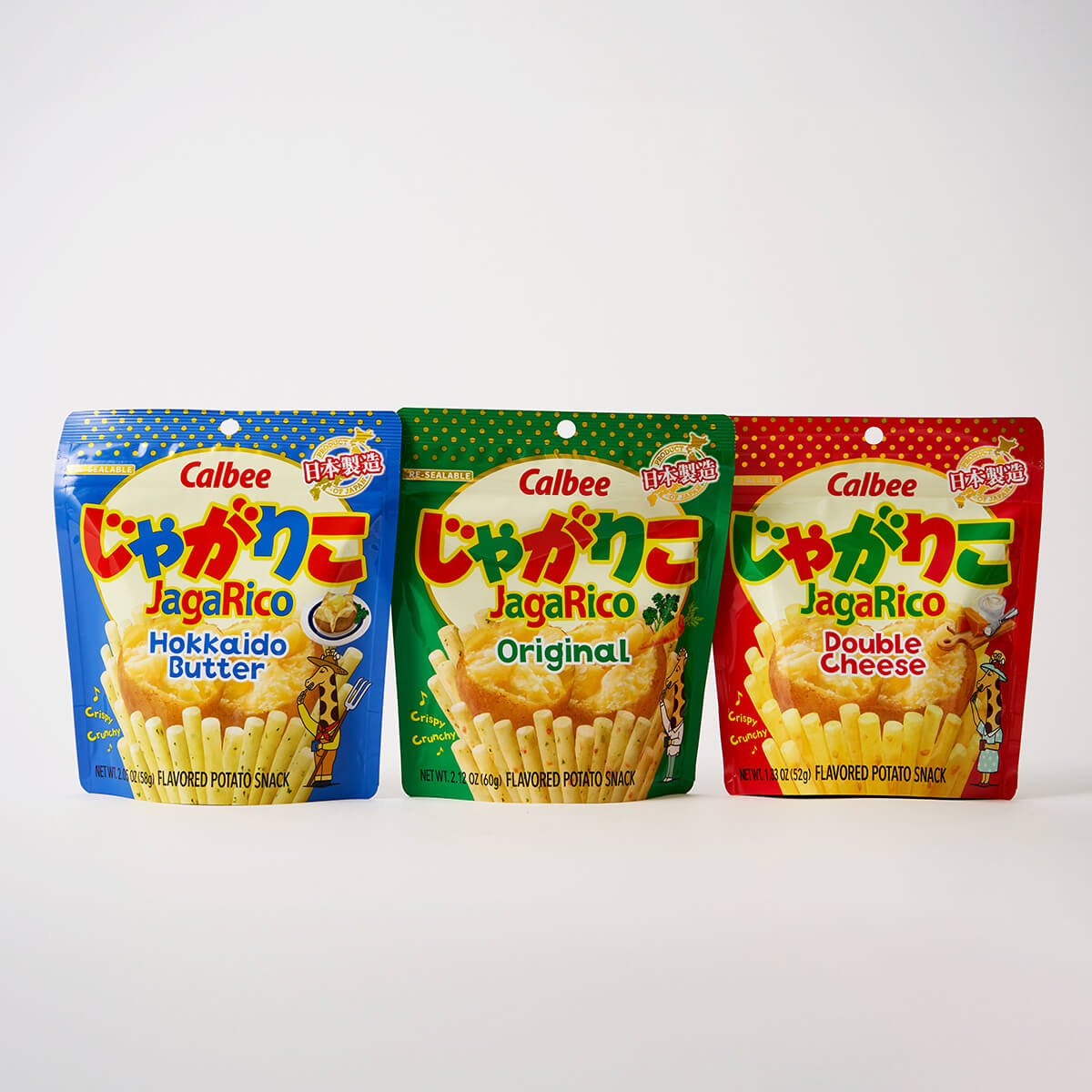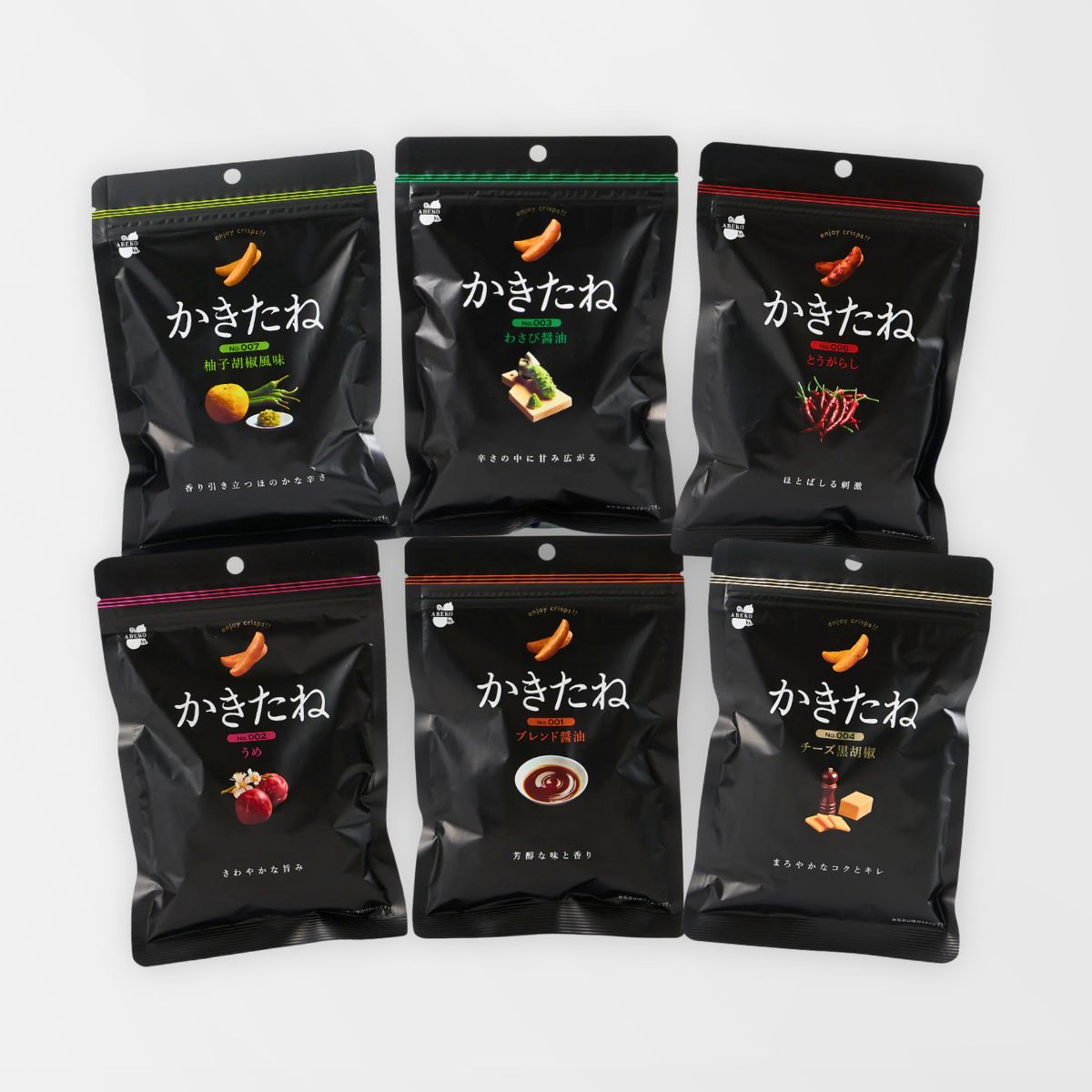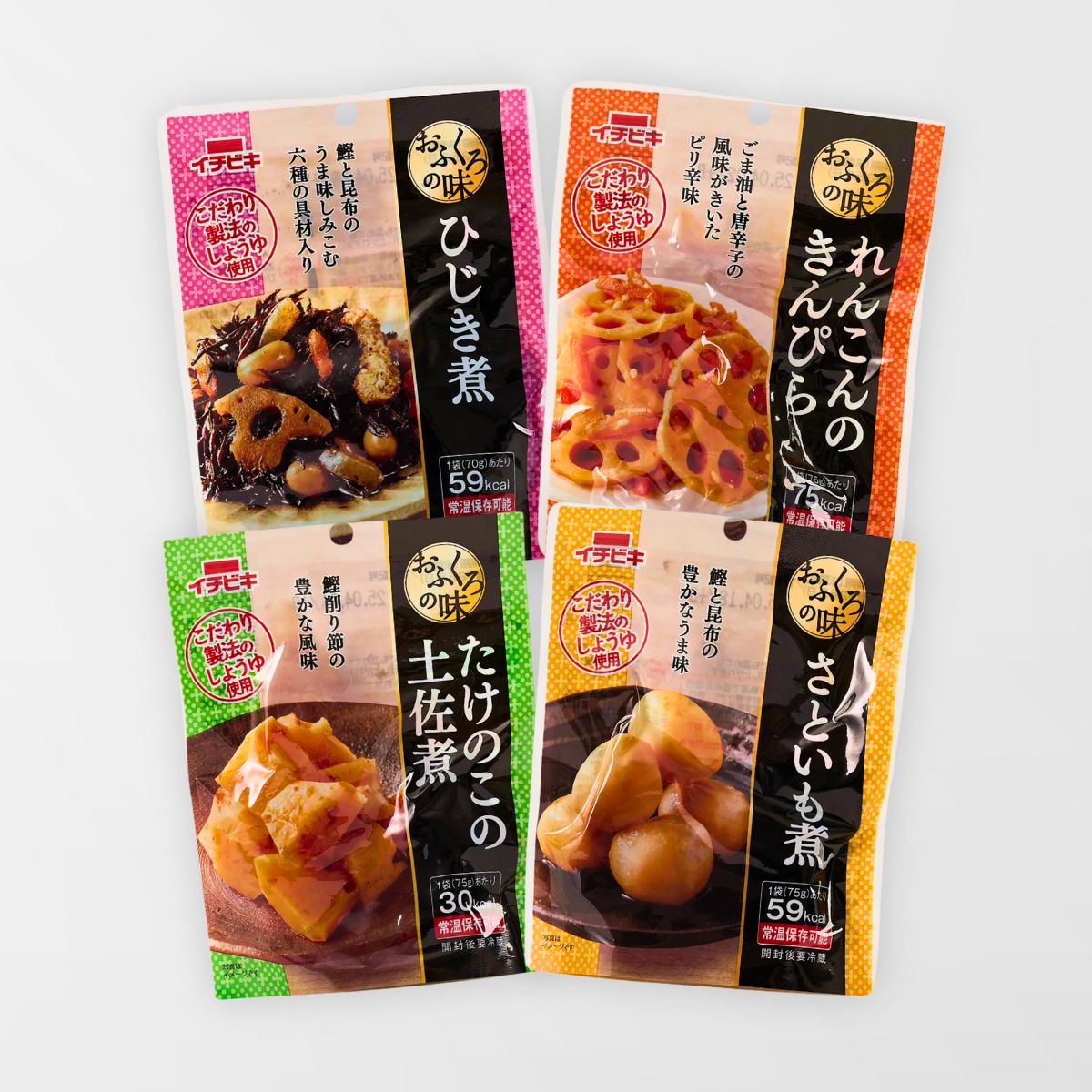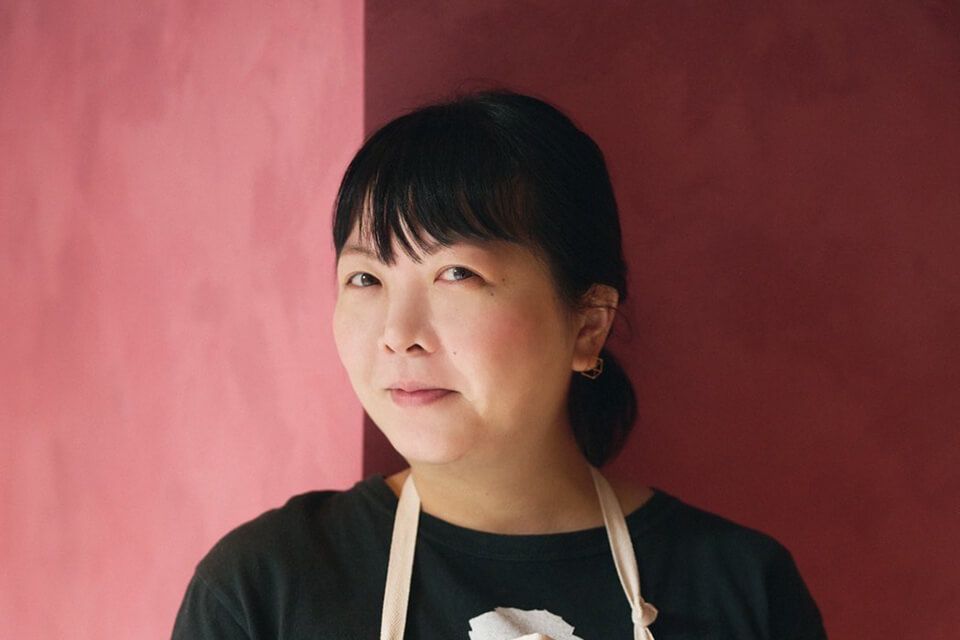From beer nuts to Scotch eggs to tapas, the world of drinking snacks is as diverse as the cultures that produce them. In Japan, these drinking snacks were originally called “sakana” (肴), or “side dishes served with alcohol.” Fish, dried and otherwise, was such a fixture of these side dishes that the word also came to be used for fish. As the variety of snacks expanded, the more general term “otsumami” came into use. This term includes the kanji character for “picking” (摘), conveying the image of small snacks that one can casually pick at.
Otsumami includes a variety of Japanese snacks and small plates, such as rice crackers, sashimi and dried seafood. In this article, I will discuss these snacks, which are popular among beer, spirits and sake drinkers. I will provide some historical context, recommend items that you can purchase from Tippsy Marketplace to recreate the izakaya experience at home, and offer sake pairing ideas.
Be sure to check out our Sake Guide if you need a little more background on sake, and bottle recommendations for beginners.
Types of Japanese drinking snacks
Today, otsumami are inextricably linked to izakaya. Izakaya evolved from the sake shops of the Edo period (1603-1868); the roots of the word “izakaya” are “i” (居; to stay or exist) and “sakaya” (酒屋; sake shop). Shops selling alcohol are recorded as far back as the Heian period (794-1185), but like liquor stores today, were places where one bought with the intent of bringing the booze home. The sakaya of Edo were no exception at first, selling sake by weight to their patrons on the go (including kids, for whom this task may have been part of a chore list). Gradually, the shop owners noticed the customers liked to stop for a chat and would often drink what they had purchased there and then. The owners began to put out sake barrels for the customers to sit on and offered simple snacks like edamame, dried fish and senbei (rice crackers) to encourage them to stay. These traditional Japanese snacks are still enjoyed today.
By the Meiji period (1868-1912), these watering holes were prolific, and Japan was opening to foreign trade. This brought in new drinks like beer along with new snacks such as potato chips, and the modern izakaya took shape.
There are now izakaya worldwide, but Tippsy Marketplace allows you to bring the experience straight to your home. There are several categories of Japanese snacks to choose from and each product page offers drink pairing suggestions — beyond just sake — and tasting notes. If you want to sample a variety, try the Taste of Japan Snack Set, which includes 10 different snacks.
I encourage you to explore the intriguing world of Japanese snacks and drinks on your own, but I’ve also included a short guide below to get you started with the different otsumami as well as some sake pairing recommendations.
Japanese rice cracker snacks
The otsumami universe has grown considerably over 400 years, but one of the most recognizable categories of finger foods is also one of the oldest: rice crackers. Rice crackers come in all shapes and sizes, but generally fall into two categories.
Senbei rice crackers
Senbei means “rice cracker.” The original rice cracker snack is believed to trace its roots to Chinese “jianbing,” a grain-based crepe and popular street food that dates back 1,000 years. Both snacks are flat, disc-shaped and grilled, and can be savory or sweet. But that’s where the similarities end. Senbei are made from non-glutinous rice flour as opposed to wheat, and are small enough to fit in one hand. The senbei that would be more recognizable to us now was developed during the Edo period in Soka, Saitama prefecture. Befco Setoshio: Shrimp Flavored (Rice Crackers) is one example of senbei.
Arare rice crackers
Arare, literally “hailstones,” are the bite-sized cousins of senbei made from glutinous rice flour. They come in many shapes and sizes, but my personal favorite variant is kaki no tane, named for the persimmon seeds they resemble, said to come from an accidentally distended production dye. Kaki no tane are, to me, the prototypical drinking snack. You can grab them by the handful, or delicately pick at them one by one. They come in a variety of flavors, but the classic, spicy soy sauce-coated kaki no tane pack a satisfying umami punch. I tend to buy two bags at a time, because I will mindlessly crush one in a sitting! Try Uegaki Arare Kakinotane Wasabi and you’ll understand why.
Some arare rice crackers are referred to as okaki, which tend to be larger, puffed mochi rice crackers. As with arare there are many shapes, sizes and flavors, meaning there’s likely something for every palate. Explore a variety with Sanko Tsubuyori Komochi (Mixed Rice Crackers).
Sake pairing tip: A versatile sake like Suigei “Tokubetsu Junmai” will stand up to just about any rice cracker you put out. Japanese rice crackers also make great beer snacks!
Edamame and tsukemono
For all the starches and fish in “washoku” (Japanese cuisine) it can be easy to forget the important role vegetables play. Given Japan’s geographical reality as an island nation with constrained land size for cultivation, catching seafood has been the preferred way to pack in the nutrients. Vegetables have been grown and harvested since ancient times, however. With the introduction of Buddhism in the sixth century, vegetables became increasingly important.
By the Heian period (794-1185), vegetables were a regular fixture in the diets of the ruling class and the working class. It wasn’t long before sake and vegetables began to appear together in the historical records. For instance, a document from the Muromachi period (1336-1573), the “Kagenki,” shows that otsumami were served with sake at Horyu-ji Temple in Nara in the 14th century. In this case, the finger food was boiled edamame (soybean pods). Soybeans are believed to have been brought to Japan from the Korean Peninsula as early as the Jomon period (14,000 B.C.E.-300 B.C.E.). The first instance of boiling them as a cooking method was recored during the Muromachi period and remains a popular cooking method nearly 700 years later.
Then as now, the best way to eat edamame — which is generally boiled before being lightly seasoned — is to put the entire pod in your mouth and then pull it back out, dragging it against your teeth to pop the soybeans out and getting all the seasoning off the shell. If you want all the flavor of edamame without the hassle of boiling it and eating it pod by pod, you can get Fuwatto Rice Crackers: Edamame Flavor from the Marketplace to scratch the itch.
Tsukemono, which simply means “pickled things,” have probably existed as long as vegetable cultivation itself. After all, refrigeration is a strikingly recent development, and one of the best ways of preserving food without keeping its temperature consistently low is to ferment it. There are many methods of pickling in Japanese cooking, from the quick and easy, salt-based “shiozuke,” to the longer and more complex sake lees (leftover sediment from the sake pressing process), and mirin-based “kasuzuke.” Tsukemono can run the gamut of flavors, from briny to bread-and-butter sweet.
Sake pairing tip: I find that earthier, more acidic sake holds up well to vegetables, pickled or otherwise, so I would reach for a yamahai or kimoto. In this case I would tap one of the great yamahai makers from Ishikawa prefecture, Yoshida Sake Brewery, and their outstanding Tedorigawa “Silver Mountain”.
Japanese seaweed snacks
Bridging the gap between seafood and vegetables, seaweed is among the most treasured Japanese ingredients. You can find it boiled to extract its umami into a rich broth known as dashi, floating in miso soup, reconstituted after being dried and then chopped into salad, or dried and seasoned to be enjoyed on its own like chips. These preparations depend on the kind of seaweed used — in this case kombu, wakame and nori, respectively. No matter how you encounter it, seaweed is a delicious umami bomb. In fact, MSG, which is a naturally occurring salt and the basic component of umami flavor, was first discovered in seaweed by a Japanese scientist in 1908.
Beyond the incarnations of seaweed mentioned above, there are many Japanese snacks that carry seaweed flavor, from rice crackers to potato chips. Sakusaku Noriten Original Flavored Seaweed Tempura, dried seaweed that’s battered and fried, is a perennial favorite in my house; I have to hide an extra bag to guarantee I’ll actually get some. The marriage of potato and seaweed in Calbee JagaRico Umami Seaweed is also absolutely delicious and difficult to put down.
Sake pairing tip: Umami tends to mute sweetness, so try something sweet like Mutsu Hassen “Pink Label” from one of my absolute favorite breweries, Hachinohe Brewing Company.
Japanese fish snacks
On to the main event in almost all Japanese cuisine. Fishing pre-dates written history in Japan, an archipelago that stretches almost 2,000 miles from the frigid north near Siberia to the tropics in the south near Taiwan. There is nowhere in Japan that is more than 72 miles from the ocean. Bounded on two sides by massive currents — the Kuroshio and the Tsushima — which bring nutrients and create some of the richest fisheries in the world, fish is a keystone in the Japanese diet. It is only natural, then, that fish would appear in otsumami.
Dried seafood snacks
Even with its nearly 18,500 miles of coastline, the interior of Japan is quite mountainous. Transporting fish across those mountains would have required special preparations to keep it stable. The process of drying it, called “himono,” is one such method. Historically, the process would have involved salting the seafood and leaving it in the sun to dry (“tempiboshi”), resulting in a hard and salty food. This was the standard practice until relatively recently in the Showa period (1926-1989), when it was discovered that drying overnight (“ichiyaboshi”) would help it retain moisture and develop more of a natural umami flavor.
Seafood in all its forms is a natural fit for sake, and breweries often develop their sake with local seafood in mind. Today, some of the most popular and widespread dried seafood snacks are shrimp chips and dried squid snacks. Grilled Sardine Strips With Black Sesame, Natori Ikamimi Squid Chips and Tairyo Grilled Scallop Strings are a few dried seafood options from Tippsy Marketplace you can try for yourself.
Sake pairing tip: Cowboy “Yamahai” stands up to any meat or dried seafood. The smokiness and acidity cuts through even the strongest flavors.
Canned seafood
Canned seafood sometimes gets a bad rap, but it can actually be a delicious and versatile addition to any meal, such as rice, pasta or salad. It can also be enjoyed on its own. Modern canning techniques preserve the fresh, natural flavors and textures of seafood, often packing it at the peak of its freshness. Beyond simply canning the seafood as-is, manufacturers can choose to cook it first, marinate it in sauces and seasonings, or pack it with other ingredients to reduce fishiness. Today, Japan produces a vast array of canned goods, or “kanzume.”
Incidentally, white anchovies on toast with olives is one of my favorite snacks, and it’s easy to put a Japanese spin on it with items like Kyokuyo Grilled Sardines With Grated Radish. Choshita Charbroiled Pacific Herring and Shukoippin Baked Littleneck Clams are some additional options for you to explore at home.
Sake pairing tip: Like its dried brethren, canned seafood is packed with umami and rich flavors — but even more so! Pair it with something bold yet acidic, like the venerable Kenbishi “Kuromatsu.”
Karaage
“Karaage” is a cooking style where meat or vegetables are coated in flour or starch and then deep-fried. The word “kara” refers to something of Chinese origin, while “age” means “deep-fried.” Thus the technique was likely introduced to Japan by Chinese chefs.
Although the word is more general, in modern usage it typically refers to Japanese fried chicken. Frying has a long history in Japan, but chickens weren’t raised for meat and eggs in large quantities until a famine on the southern island of Kyushu during the Kyoho period (1716-1736) led to an increase in poultry farming. Even then, it took another 200 years and a devastating world war for Japanese fried chicken to take shape in the way we know it today.
An izakaya food almost from its inception, it gained national and eventually international acclaim after the enterprising owner of Shosuke izakaya in Nakatsu, Oita prefecture, discovered the dish at a Chinese restaurant called Rairaiken in nearby Usa and converted his business entirely into a karaage shop. There are now dozens of karaage shops in Oita, and karaage can be found on menus all over the world. (Fried foods are also popular Japanese festival foods called “yatai.”)
Karaage is made by marinating pieces of chicken (generally the rich thigh meat) in soy sauce, sake, garlic and mirin before dredging and deep-frying them. The result is crispy on the outside, tender and juicy on the inside, and absolutely delicious. It’s served and consumed piping hot, often with a drizzle of Kewpie mayo and an ice-cold beer.
Sake pairing tip: Karaage and beer go hand-in-hand, but that doesn’t mean sake is out of the picture. Because karaage is so rich, I would recommend something a bit drier and more acidic to cut through it, like Yano “Umami” Aged Kimoto Junmai.
Gyoza
Gyoza are Japanese dumplings with thin wrappers and savory fillings. They are typically pan-fried to create a crispy bottom and steamed top. Originating from Chinese jiaozi, gyoza is popular in Japan as a snack or side dish. Common fillings include ground pork mixed with cabbage, garlic, ginger and green onions. Variations feature chicken, shrimp or beef, and there are also vegetarian options with mushrooms, tofu or a variety of vegetables. Gyoza can be seasoned with soy sauce, sesame oil and sometimes miso. These dumplings are often served with a dipping sauce made of soy sauce, vinegar and chili oil. These are rich and filling dumplings, which make a perfect start to any drinking session.
Sake pairing tip: I like my gyoza with plenty of chili oil for piquancy, which means I usually want to match it with a sake that stands up to some heat. I’ve found that nigori is actually a really good pairing for spicy food, like this light and creamy Niwa no Uguisu “Usunigori” from Fukoka.
Japanese potato chips
The potato originated in South America, where it has been cultivated for food since long before colonization. Like the rest of the world, potatoes made their way to Japan through trade. In the early 17th century, Dutch merchants brought potato crops to Kyushu. Because of the beautiful flowers they produce, locals in Japan as well as in Europe initially considered the plants ornamental. While the south of Japan grows a lot of sweet potato varieties, up north — especially in Hokkaido — the starchy white potatoes we associate with chips dominate. There is even evidence to show that the Ainu people, indigenous to the north, grew potatoes, likely after contact with Russian traders.
The Japanese did incorporate potatoes into their diet, especially in poor rice-growing areas, but it wasn’t until the 20th century that the potato chip first made its appearance, once again via trade, only this time with the United States. Okinawa received the first bags in the early 20th century and it took off from there. Fortunately for Japanese producers, there was an established domestic crop of potatoes fit for frying in Hokkaido. By the 1970s, Calbee — a company that started life as a candy producer in Hiroshima after the war — had opened up a factory in Hokkaido, and reorganized around the production of potato snacks. Chips with local flavors like seaweed and wasabi soon followed and the humble snack food took off.
Chips are maybe the most universally recognizable bar snack and a perfect blank slate for trying new flavors. There are some unique ones you can check out in the Marketplace, such as Calbee Potato Chips: Setouchi Lemon Flavor.
Sake pairing tip: I can’t remember who said that chips are basically a flavor delivery vehicle, but it’s very true. Sake pairing with chips can vary widely depending on which flavor you are working with, but you can cover your bases with something bold. When I think of bold sake, I think “nama” (unpasteurized sake), which offers more lively, untamed flavors. The excellent Narutotai “Ginjo” Nama Genshu will do the trick.
Savoring the experience
Whether you’re at a “nomikai” (drinking party centered around work) keeping a watchful eye on your colleagues’ drink levels, posted up in a friend’s kitchen, or just enjoying a quiet evening alone, having otsumami at hand can help maintain the balance of the evening. While it was originally a part of the izakaya experience, it need not be limited to a physical location. With Tippsy Marketplace, you can bring the izakaya experience home.
If you feel like you could still use help choosing sake, get expert recommendations by taking our sake quiz. Our Sake Guide lesson “Best Bottles & Brands for Beginners” is also a great resource for those just getting acquainted with sake.
Kampai!
References
Andoh, E. “Sweet or savory, edamame ‘zunda’ is a soybean revelation.” Japan Times, 2023.https://www.japantimes.co.jp/life/2023/09/17/food-drink/washoku-essentials-zunda-edamame/
Bestor, Theodore C. and Bestor, Victoria L. “Japan and the Sea.” Maritime Asia, Vol. 19:2, Fall 2014.https://www.asianstudies.org/publications/eaa/archives/japan-and-the-sea/
Cartwright, M. “Food & Agriculture in Ancient Japan” World History Encyclopedia, 2017.https://www.worldhistory.org/article/1082/food--agriculture-in-ancient-japan/
Chef Alyssa. “Crunching through Time: The History and Flavors of Potato Chips in Okinawa, Japan.” Semper Pot Pie, 2023.https://www.semperpotpie.com/crunching-through-time-the-history-and-flavors-of-potato-chips-in-okinawa-japan/
Feinstein, P. “The world’s surprising fried chicken capital.” BBC, 2022.https://www.bbc.com/travel/article/20221213-why-fried-chicken-is-a-big-deal-in-japan
Geiling, N. “It’s the Umami, Stupid. Why the Truth About MSG is So Easy to Swallow” Smithsonian Magazine, 2013.https://www.smithsonianmag.com/arts-culture/its-the-umami-stupid-why-the-truth-about-msg-is-so-easy-to-swallow-180947626/
Hirata Paku, K. “Tsukemono: A Guide to Japanese Pickles.” Just One Cookbook, 2023.https://www.justonecookbook.com/tsukemono-guide-to-japanese-pickles/
“History,” Calbee.https://www.calbee.co.jp/en/corporate/history/product.php
Itoh, M. “The storied history of the potato in Japanese cooking” Japan Times, 2017.https://www.japantimes.co.jp/life/2017/04/22/food/storied-history-potato-japanese-cooking/
Iwabuchi, H. “Numazu’s Himono, Born of Craftsmanship, and Secret Brine.” Shun Gate, 2022.https://shun-gate.com/en/roots/roots_118/
Lozano, Jose J. “SENBEI, ARARE, AND OKAKI: NOT YOUR CONVENTIONAL RICE CRACKERS.” Arigato Japan, 2023.https://arigatojapan.co.jp/senbei-arare-and-okaki-not-your-conventional-rice-crackers/
Peixe, P. “Tinned Fish: An Origin Story.” Tin Can Fish, 2022.https://tincanfish.com/blogs/pedros-peixe/tinned-fish-an-origin-story
“The history and present of Soka Senbei.” Soka City Hall, 2012.https://web.archive.org/web/20140530011359/http://www.city.soka.saitama.jp/cont/s1403/a02/a03/01.html
Swiers, A. “Japan’s Canned Seafood Industry Has Been Going Strong Since 1871.” Tasting Table, 2023.https://www.tastingtable.com/1187900/japans-canned-seafood-industry-has-been-going-strong-since-1871/
Terrasson, N. “Izakaya: the Japanese Tavern.” Gochiso History.https://gochisohistory.com/izakaya/
Whiskey Richard. “THE NOMIKAI: JAPAN’S BUSINESS DRINKING CULTURE.” Nomunication, 2018.https://www.nomunication.jp/japans-business-drinking-culture/













